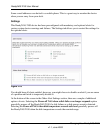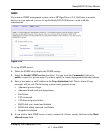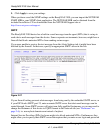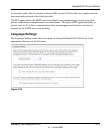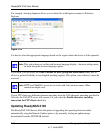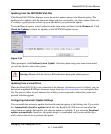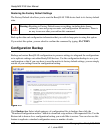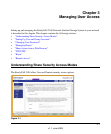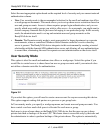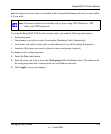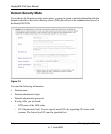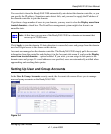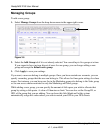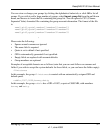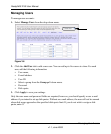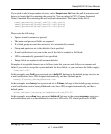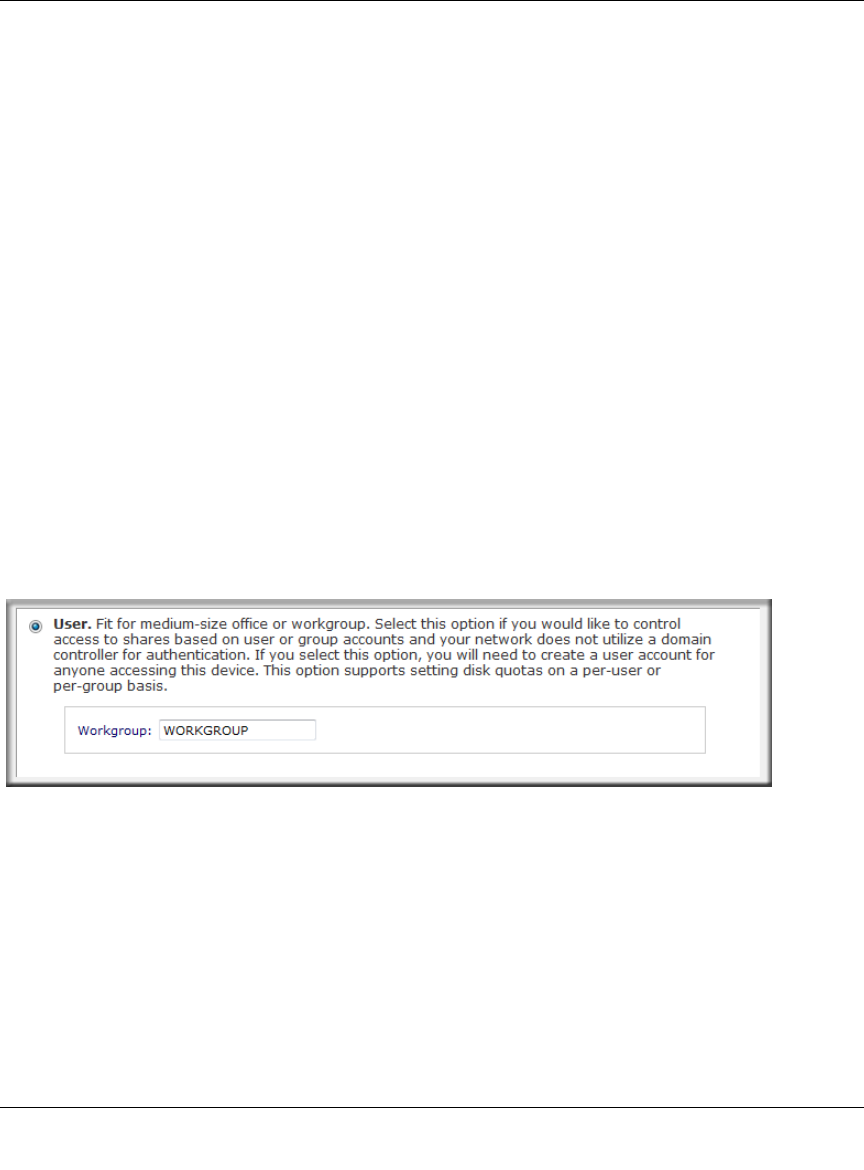
ReadyNAS 2100 User Manual
3-2 Managing User Access
v1.1, June 2009
Select the most appropriate option based on the required level of security and your current network
authentication scheme.
• User. User security mode is the recommended selection for the small and medium-size office
or workgroup environments. This mode allows you to set up share access restrictions based on
user and group accounts. Access to shares requires proper login authentication, and you can
specify which users and/or groups you wish to offer access. As an example, you might want to
restrict company financial data to just users belonging to one particular group. In this security
mode, the administrator need to set up and maintain user and group accounts on the
ReadyNAS device itself.
• Domain. The Domain security mode is most appropriate for larger department or corporate
environments, where a centralized Windows-based domain controller or active directory
server is present. The ReadyNAS device integrates in this environment by creating a trusted
relationship with the domain/ADS authentication server and allowing all user authentications
to occur there, eliminating the need for separate account administration on the device itself.
User Security Mode
This option is ideal for small and medium-size offices or workgroups. Select this option if you
would like to control access to shares based on user or group accounts and if your network does
not utilize a domain controller for authentication.
If you select this option, you will need to create a user account for anyone accessing this device.
This option supports setting disk quotas on a per-user or per-group basis.
In User security mode, you specify a workgroup name, and create user and group accounts. You
have control over how much disk space is allocated for each user or group.
Each user is given a home share on the ReadyNAS 2100 device that the user can use to keep
private data such as backups of the user’s PC. This home share is accessible only by that user and
the administrator in order to perform backups of the private shares. The option to automatically
Figure 3-2



